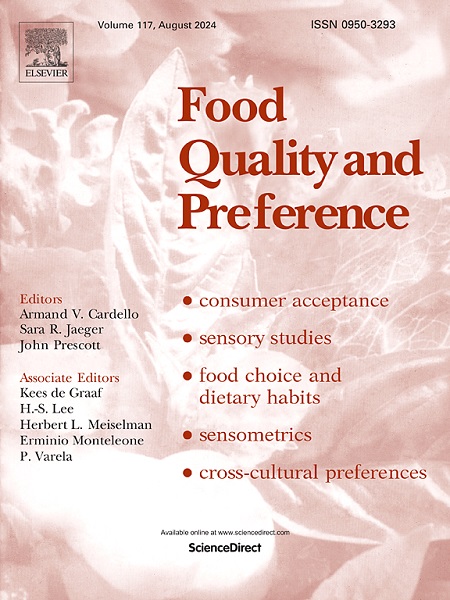组学标签和消费者偏好:理解苹果购买中的审美和口味评价
IF 4.9
1区 农林科学
Q1 FOOD SCIENCE & TECHNOLOGY
引用次数: 0
摘要
在伦理、环境和健康考虑的推动下,有机食品市场在种植面积和消费者需求方面都在迅速扩大。然而,食品欺诈计划构成了威胁产品可信度的挑战。组学技术——采用基因组学、转录组学和代谢组学的先进可追溯方法——可能为验证有机产品的真实性提供潜在的解决方案。尽管如此,目前还没有研究调查消费者如何看待通过这些技术认证的有机产品。本研究旨在通过探索组学标签如何影响消费者对苹果口味、审美和购买意图的评价来填补这一知识空白。一项涉及129名消费者的感官实验评估了一批苹果的这些特征,这些苹果的不同之处在于向消费者展示时使用的标签不同。使用的标签是“传统”、“有机”和“组学认证”。虽然“组学认证”的苹果在审美和味觉方面普遍受到欢迎,但它们与传统苹果之间没有统计学上的显著差异。同样,在审美和味道评价方面,组学和有机标签之间没有发现差异。然而,与普通苹果相比,贴上有机认证和有机标签的苹果的购买意愿要高得多。这些发现表明,标签在影响购买意愿方面发挥着关键作用,突出了组学认证作为有机标签的可靠替代品的潜力,以及它们增强消费者对食品真实性信任的能力。本文章由计算机程序翻译,如有差异,请以英文原文为准。
Omics labeling and consumer preferences: Understanding aesthetic and taste evaluations in apple purchases
The organic food market is rapidly expanding in both cultivated acreage and consumer demand, driven by ethical, environmental, and health considerations. However, food fraud schemes pose challenges that threaten product credibility. Omics technologies—advanced traceability methods employing genomics, transcriptomics, and metabolomics— may offer a potential solution for verifying the authenticity of organic products. Despite this, no studies have investigated yet how consumers perceive organic products certified through these technologies. The present study aims to fill this knowledge gap by exploring how the omics label affects consumer evaluations of taste, aesthetic and intention to buy apples. A sensory experiment involving 129 consumers assessed these attributes for a single batch of apples, which differed only in terms of the label used when presented to consumers. The labels used were ' conventional', 'organic', and 'omics certified'. Although “omics-certified” apples were generally well-received in terms of aesthetic and taste appreciation, there were no statistically significant differences between them and conventional apples. Similarly, no differences were found between omics and organic labels in terms of aesthetic and taste evaluations. However, purchase intention was significantly higher for apples labelled as omics-certified and organic compared to conventional ones. These findings suggest that labels play a critical role in influencing purchase intention, highlighting the potential of omics certifications as a credible alternative to organic labels and their ability to enhance consumer trust in food authenticity.
求助全文
通过发布文献求助,成功后即可免费获取论文全文。
去求助
来源期刊

Food Quality and Preference
工程技术-食品科技
CiteScore
10.40
自引率
15.10%
发文量
263
审稿时长
38 days
期刊介绍:
Food Quality and Preference is a journal devoted to sensory, consumer and behavioural research in food and non-food products. It publishes original research, critical reviews, and short communications in sensory and consumer science, and sensometrics. In addition, the journal publishes special invited issues on important timely topics and from relevant conferences. These are aimed at bridging the gap between research and application, bringing together authors and readers in consumer and market research, sensory science, sensometrics and sensory evaluation, nutrition and food choice, as well as food research, product development and sensory quality assurance. Submissions to Food Quality and Preference are limited to papers that include some form of human measurement; papers that are limited to physical/chemical measures or the routine application of sensory, consumer or econometric analysis will not be considered unless they specifically make a novel scientific contribution in line with the journal''s coverage as outlined below.
 求助内容:
求助内容: 应助结果提醒方式:
应助结果提醒方式:


